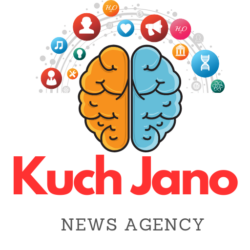Manga’s Advantages for Young Readers (and Adults)
It’s a common misconception that graphic novels are “too easy” since they explain stories through pictures, but this is completely untrue! Instead of just reading text on a page, graphic novels allow the reader to see how panels work together as the images progress the plot. They are particularly intriguing to those who dislike reading books with a lot of text because many of them tell gripping stories with less words and more pictures. Adding manga into the mix opens even more possibilities. For both young and older readers, manga has a lot to offer.
Read More: japanese adult comics
Table of Contents
What does manga signify, and who is it for?
In essence, they are Japanese illustrated stories covering a variety of topics. Many of them are adapted into anime (Japanese animated series and films) because, like movies, they primarily rely on visual language, dialogue, and sound effects. However, manga has a wide variety of topics and a large range of target groups. Chi’s Sweet Home is one of the many wonderful children’s television programs available. However, it’s crucial to realize that not every graphic is meant for young readers. Just like there are designed comics for adult readers here in the West, manga is meant for mature viewers. The New York Public Library states that just because a manga features cute or innocent characters doesn’t mean it’s appropriate for young readers.
Handling the Manga Discussion
To address the main topic at hand: Manga has, in fact, caused a great deal of debate in the West. Unfortunately, individuals on both sides of the argument often disparage manga. Such criticism results from a lack of basic research into the location and intended audience of a tale, as well as from a lack of understanding of what manga is. Of course, this is a biased view of a more general problem, but that’s a another story for another day. The most important thing, especially for parents, is to assess each series independently and decide which is suitable for your child to read. To help with your choice, the Canton Public Library has an excellent guide.
The Specific Benefits of Manga Reading
Returning to the positives, a statewide survey in Japan found that a vast majority of participants believed that reading manga helped children improve their expressiveness and sensitivity, among other abilities. Unlike regular literature, manga stimulates the brain in a new way. The fact that the volumes are read “backwards” might occasionally startle new manga readers. Because Japanese people read from right to left instead of left to right like we do, manga immediately presents you with a unique challenge by teaching you a new reading technique! Furthermore, multimodal learning enhances your capacity to take in the story and visuals by teaching you to comprehend words, images, and sound effects (onomatopoeia). Due to its emphasis on visual language and its limited, repetitive patterns, this can be particularly beneficial for those with autism spectrum condition. Furthermore, manga may introduce novel ideas, civilizations, and issues in a way that is easier to comprehend than text alone. Additionally, it might make it simpler for young readers—particularly teenagers—to identify with and relate to the personal events they may be going through. The greatest benefit of all, in my humble opinion, is that manga is exciting and fascinating for readers of all ages!
How to Get Started
Choosing where to start might be challenging with so many interesting programs available. There are some great ideas in the articles mentioned above, but you can always ask your friendly local library question here! Or maybe we might learn something new together by picking your brain. Are you having trouble finding your favorite manga series at the library? Send us a purchase request! Alternatively, submit an application for an Interlibrary Loan! It’s never too late to start reading manga, regardless of age. There is something fun for everyone, so why not try it? Your brain will feel grateful!
